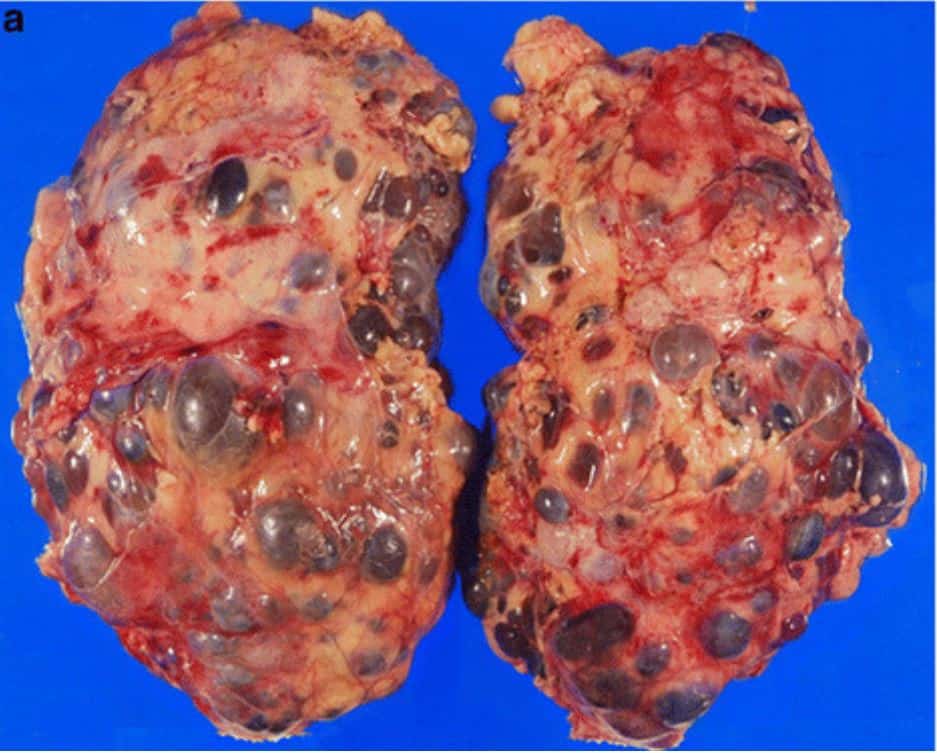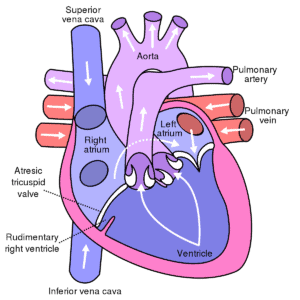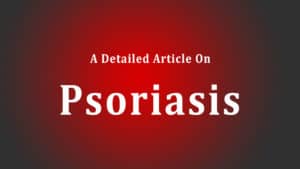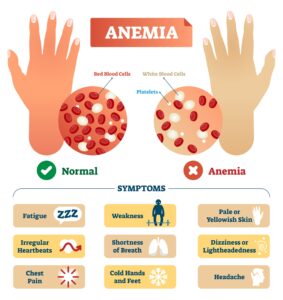Adult polycystic kidney disease types
- Autosomal dominant PKD (ADPKD), which is typically diagnosed in adults; and
- Autosomal recessive PKD (ARPKD), can be identified in utero or shortly after birth.
Autosomal dominant PKD
In patients with autosomal dominant PKD, fluid-filled cysts develop in the kidneys. In addition to the liver and pancreas, cysts may also occur in other organs. Many people acquire so many cysts that they eventually lead to renal failure, necessitating dialysis or a transplant.
In the United States, around 540,000 people have autosomal dominant PKD, making it the most prevalent inherited kidney illness.
Autosomal recessive PKD
Autosomal recessive PKD is a rare kind of polycystic kidney disease that is inherited. Signs appear within the first several months of life or even during fetal development (womb).
Autosomal recessive PKD is frequently dubbed ‘infantile PKD’. Children born with autosomal recessive PKD frequently experience kidney failure within a few years of life and liver issues as they mature into adults.
Inheritance
The majority of cases of polycystic kidney disease exhibit an autosomal dominant inheritance pattern. People with this disorder have one mutant copy of the PKD1 or PKD2 gene in each cell at birth. In around 90% of cases, an affected individual inherits the mutation from one affected parent. The other 10% of cases come from a novel mutation in one of the genes and affect individuals with no family history of the condition.
Although a single changed copy of a gene in each cell is sufficient to induce the ailment, an extra mutation in the second copy of the PKD1 or PKD2 gene may accelerate cyst growth and exacerbate the disease. Unidentified changes in other genes may alter the rate at which cysts enlarge and cause a decline in kidney function.
Polycystic kidney disease can also be inherited autosomally recessively. This version of the disease is characterized by two mutated copies of the PKHD1 gene in each cell. The parents of a kid with an autosomal recessive condition are unaffected carriers of one mutated gene copy.
Symptoms
The following symptoms may indicate that you need to be investigated and perhaps diagnosed with polycystic kidney disease and treated accordingly:
- Blood present in the pee
- Headaches
- Elevated blood pressure
- Kidney stones and infections
- Soreness in the back or sides
- Swelling of the abdomen and feeling full
- Urogenital infections

Diagnostic testing
Many individuals with autosomal dominant polycystic kidney disease have no indications or symptoms. Some individuals can live their entire lives unaware of having polycystic kidney disease. In many instances, conventional blood and urine testing may not reveal any indications of PKD.
Ultrasound is the most popular method for detecting ADPKD in its earliest stage. Sound waves harmlessly travel through the kidneys and provide an image for the physician to study. If the cysts are large enough, a physician will be able to view them.
Also utilized for diagnosis are computed tomography (CT) scans and magnetic resonance imaging (MRI). CT utilizes radiation (an x-ray) and frequently requires the injection of a dye to improve visibility.
Treatment
There is no cure for ADPKD, although it is possible to treat the associated health issues and prevent kidney failure. You may need:
- Drugs that prevent renal failure. Tolvaptan (Jynarque) can reduce the deterioration of kidney function in persons whose condition is likely to worsen rapidly.
- Medications to reduce blood pressure
- Antibiotics for urinary tract infection treatment
- Pain medications
If your kidneys fail, you will require dialysis, a process that uses a machine to filter your blood and eliminate waste, such as salt, excess water, and certain chemicals. For a kidney transplant, you can alternatively join a waiting list or receive a kidney from a living donor. Ask your physician if this is a viable choice for you.
It is essential to maintain optimal health to safeguard your kidneys and keep them functioning for as long as feasible. Follow your doctor’s instructions precisely. You can also maintain these healthy practices:
- Eat well. Maintain a nutritious, well-balanced, low-fat, and calorie diet. Salt can elevate blood pressure, so try to consume less of it.
- Remain active. Physical activity can help you manage your weight and blood pressure. Simply avoid any contact sports that could cause kidney damage.
- Don’t smoke. If you smoke, seek medical assistance to quit. Smoking affects the blood arteries in the kidneys and may lead to an increase in cyst formation.
- Consume a lot of water. Dehydration may increase your risk of developing cysts.
Prognosis
ADPKD patients may have a normal life, whereas ARPKD might lead to renal disease and kidney failure between the ages of 40 and 60. ADPKD1 and ADPKD2 are dissimilar in that ADPKD2 are considerably less severe.
There are currently no viable treatments for preventing the progression of ADPKD.



